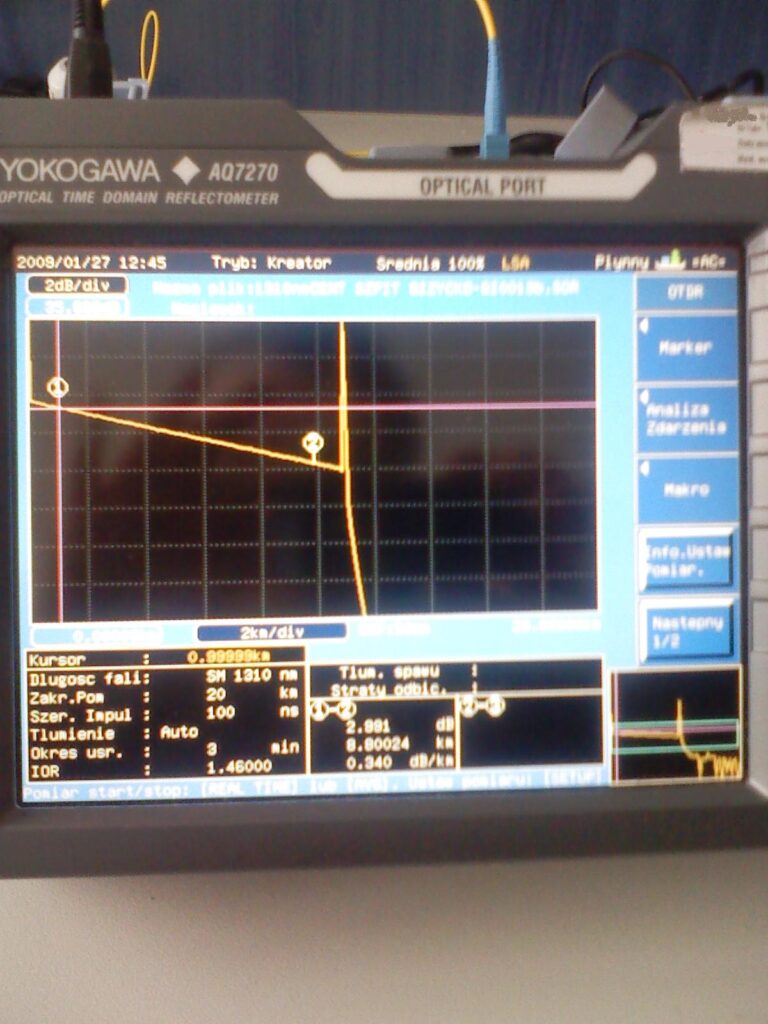How to Solve the Common Problems in OTDR
OTDR is the term used to represent an optical time-domain reflectometer is a fiber system. The term is used in many phases of the life of fiber systems, like their construction, maintenance, and troubleshooting.

Once a fiber optic cable is installed, it needs to be characterized with the help of fiber optic testing equipment. OTDR is one such equipment for troubleshooting and testing the fiber optic cables and systems. The OTDR operators face several problems while maintaining and troubleshooting the fiber systems. Let us know some tips to solve common problems in OTDR.
Non-reflective Break
When a fiber optic cable is broken or cut, the broken end may get shattered and stop the light from reflecting. If the ends are not connected properly, they cannot transmit the signal for which the fiber cable is installed. In such cases, it becomes difficult for the technician to judge the fall-off point.
Therefore, the best technique to find out the breakpoint is to use a two-point loss method. By the 2-point loss method, you can find the point at which the backscatter level drops by 0.5 dB. Now place the left cursor as possible as near the end but still on the backscatter. After that, move the right cursor towards the left one until the loss between them comes to 0.5 dB. To trust your testing at this location, take the OTDR to another end and test it from the other side. Another side might reflect some amount of light.
Gain Splice
Sometimes while splicing the two fibers, the backscatter level shifts up at the splice point. It might appear like a gain in power in the beginning, and the OTDR may also show you a negative splice loss. The two fibers mismatch, and the second one scatters back more light than the first. The second fiber shows a higher backscattering coefficient, and the OTDR reads it as higher than the first fiber end.
If you want to test the same splice from the opposite direction, the OTDR will show a higher normal loss than the value of the negative loss. Here the true value of spice loss will be the average of both readings. For example, if the gainer shows – 0.25 dB, and the opposite direction shows 0.45 dB, the actual spice loss value will be 0.1 dB.
Choose the large pulse width.
Choosing the larger pulse width is a common method used to increase the injection energy of the laser beam. Due to the laser performance limitations, it is challenging to adjust the laser to achieve greater emission energy. Therefore, by using this method, it is actually possible to achieve a greater dynamic range. However, the larger pulse width also leads to greater blind spots.
All about Trace

When you troubleshoot any fiber cable using an OTDR, you will get a graphical signature of the fiber loss across the length of the cable. Although an OTDR trace can be overwhelming to many technicians, it tells you much about the fiber link with each spike and dip in its results. The experienced technicians identify the reflective events for testing the connectors, tester connectors, splices, launch cords, miss-matched fibers, and the link ends. They can easily see the little blips at the end of the links that they call them ghosts. These blips are not the real events that you need to be concerned with.
Ghost reflections
These are the large reflections that occur within the fiber. They occur when a large reflection takes place inside a short fiber. The reflection becomes large because of it bouncing back and forth inside the fiber. Technicians can use the ghost busting techniques to check their presence in the fiber and also eliminate them.
To determine a ghost reflection, measure the distance to the suspected reflection and place a cursor on half of this length on the fiber. If the expected reflection is on half the way of the mark, the suspected reflection is a ghost reflection.
Changing the distance range may also help eliminate ghost reflections. In some OTDTs, ghost reflections can occur if the distance range is too short. Increasing the range setting can help eliminate the ghost reflection in such cases.
Covertel offers networking, testing, and networking services to organizations in Australia. Many government organizations, private corporations, defense organizations, and businesses are among their loyal clients. If you have a business in Australia, you can consult Covertel for any of their services. Visit their website to check out their wide range of technical services.
Final Words
OTDR can help you solve many problems in fiber optical communication. However, it is essential to learn the use of OTDR equipment for testing and fixing the problems. Also, it is important to choose the right OTDR with adequate capabilities to test and fix the technical issues in the fiber systems. Following the tips in this post can help the OTDR technicians to fix the common problems in fiber cables.



